MXA RACE TEST: THE REAL TEST OF THE 2019 KAWASAKI KX450
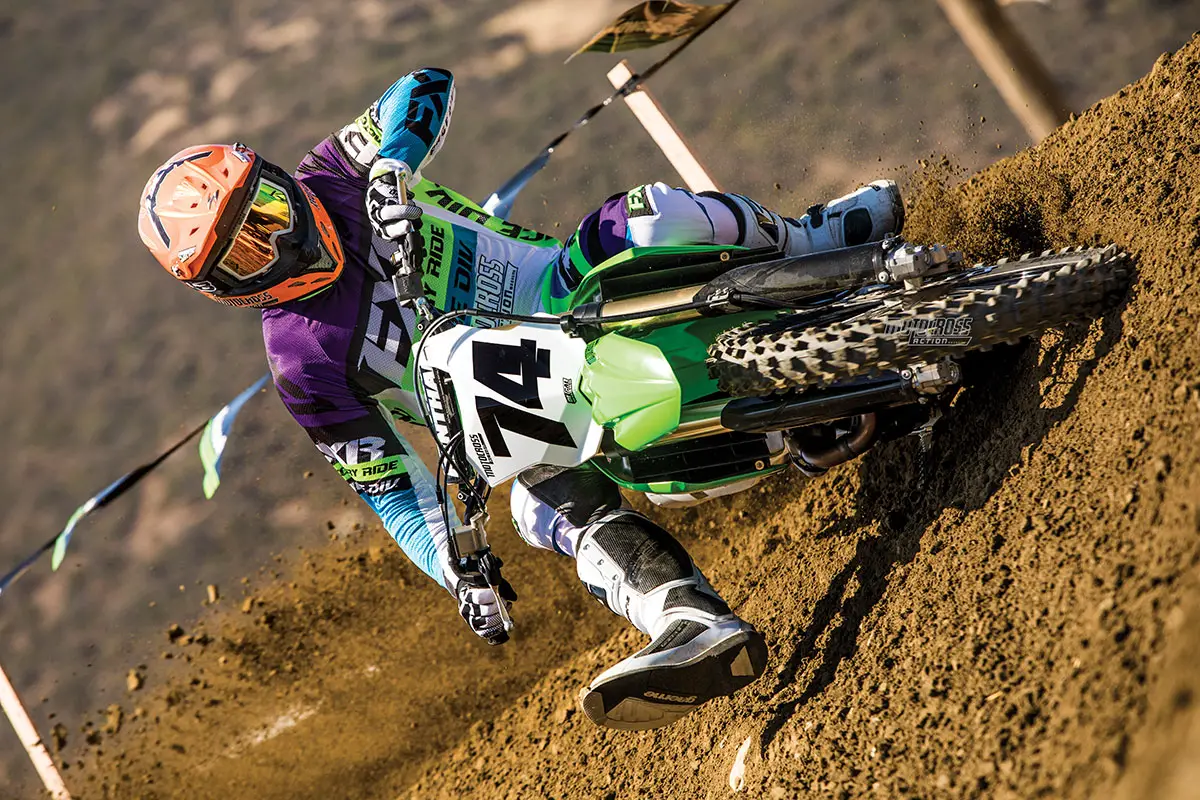
Q: FIRST AND FOREMOST, IS THE 2019 KX450 BETTER THAN THE 2018 KX450F?
A: You bet. Overall, the Kawasaki engineers made major strides in improving the power delivery, handling, ergos and setup of the new KX450 over the previous edition. For loyal Kawasaki racers, this is a step above and beyond. For non-Kawasaki riders who never had the green machine on their short list, it is suddenly a viable choice.
Q: WHAT DID KAWASAKI CHANGE ON THE KX450 FOR 2018?
This is a totally new machine. It has benefited from major engine, suspension and chassis modifications for 2019. Here is a quick rundown by category.
Engine. Seventeen-gram-lighter bridge-box piston, plain bearings in the connecting rod’s big end, cylinder offset is 8.5mm forward from the crank centerline, semi-dry sump crankcase, 4mm-larger intake valves (with 0.8mm more lift), 2mm larger exhaust valves (with 0.5mm more lift), valves are operated by finger-followers, intake tract angled 10 degrees farther downward, 1mm-larger throttle body (with a butterfly valve that opens from the top), 12-hole injector that sprays 75 micron droplets and flows 20 percent more fuel, 105mm-longer head pipe, hydraulic clutch and electric starting (with Skyrich lithium-iron-phosphate battery).
Suspension. Showa coil-spring forks replace last year’s SFF-TAC air forks, front axle increased from 20mm to 25mm, revised rising-rate shock linkage and shock moved 5mm to the right.
Chassis. New front-brake master cylinder, rear brake rotor increased from 240mm to 250mm, 5mm-wider footpegs that are 3mm further rearward, narrower width at radiator shrouds and in-mold radiator graphics.
Q: HOW DOES THE 2019 KAWASAKI KX450 RUN ON THE TRACK?
A: Every MXA test rider loved the 2019 Kawasaki KX450 powerband. It was reminiscent of the great KX450 powerbands of five years ago and less like the linear profiles Kawasaki has been producing as of late. It is super responsive off the bottom, so responsive that some riders opted for a mellower (black) plug-in ECU coupler. However, this was just a momentary lapse in judgement. In real dirt, the stock green coupler produces a quick-hitting, fast-revving and ultra-responsive bottom end that jumps into a steadily building midrange before taking off at 9400 rpm with a real boost of power. The real meat of the 2019 KX450 powerband is found from 9400 rpm on up, but this engine isn’t as much about raw horsepower as it is about lively throttle response.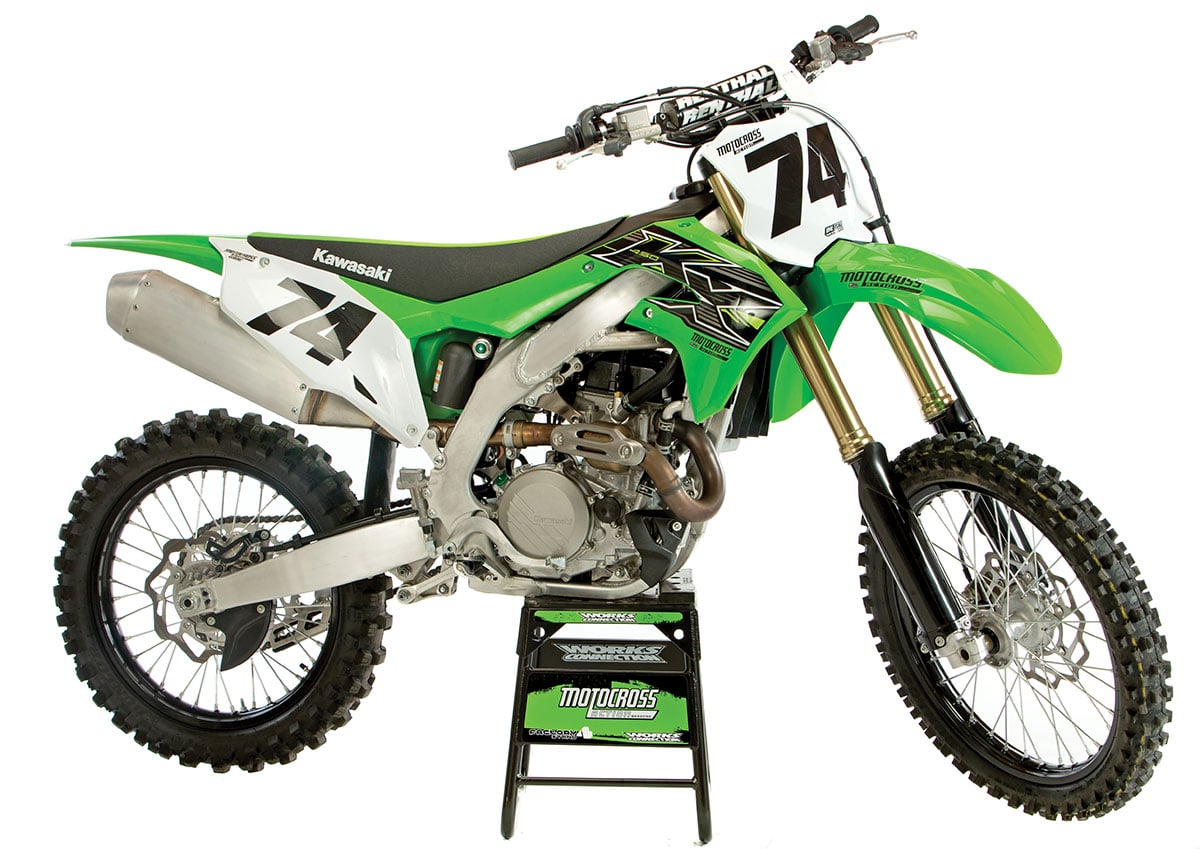 Almost everything on the 2019 Kawasaki KX450 is a step up on the evolutionary scale from the 2018 model. However, as with any first-year model, there are a few kinks in the armor.
Almost everything on the 2019 Kawasaki KX450 is a step up on the evolutionary scale from the 2018 model. However, as with any first-year model, there are a few kinks in the armor.
Q: WHAT ARE THE 2019 KX450 DYNO NUMBERS?
A: The 2019 Kawasaki KX450 dyno numbers tell an interesting and conflicting story about what test riders feel in the saddle and what is really happening.
2018 versus 2019. As much as test riders liked the snap of the new engine, it really didn’t deliver more power than the 2018 engine until after 9400 rpm. Last year’s 2018 KX450F engine was one horse better at 6000 rpm, 7000 rpm, 8000 rpm and 9000 rpm. After 9400 rpm, the 2019 KX450 finally made more power (three more horses at 11,000 rpm). Peak horsepower was 56.4 for the 2018 engine at 8800 rpm and 55.3 horses at 9500 rpm for the 2019 model. Analytically, the numbers favor the more linear 2018 KX450F engine until 9400 rpm—and torque follows the same pattern with the 2018 model making 1.5 pound-feet more from 5000 to 9400 rpm.
So, why do the test riders prefer the weaker new engine over the stronger old engine? Because the 2019 engine is more responsive, picks up quicker and has a sense of urgency. The old linear engine was a no-muss, no-fuss powerplant. The new engine is all buzz. When we ran the 2019 KX450 head-to-head against the 2018 bike, every test rider preferred the new engine. It should be noted that the KX450 makes 5 less horsepower than the 2019 CRF450 and ranks fifth out of the six 2019 450s in peak horsepower.
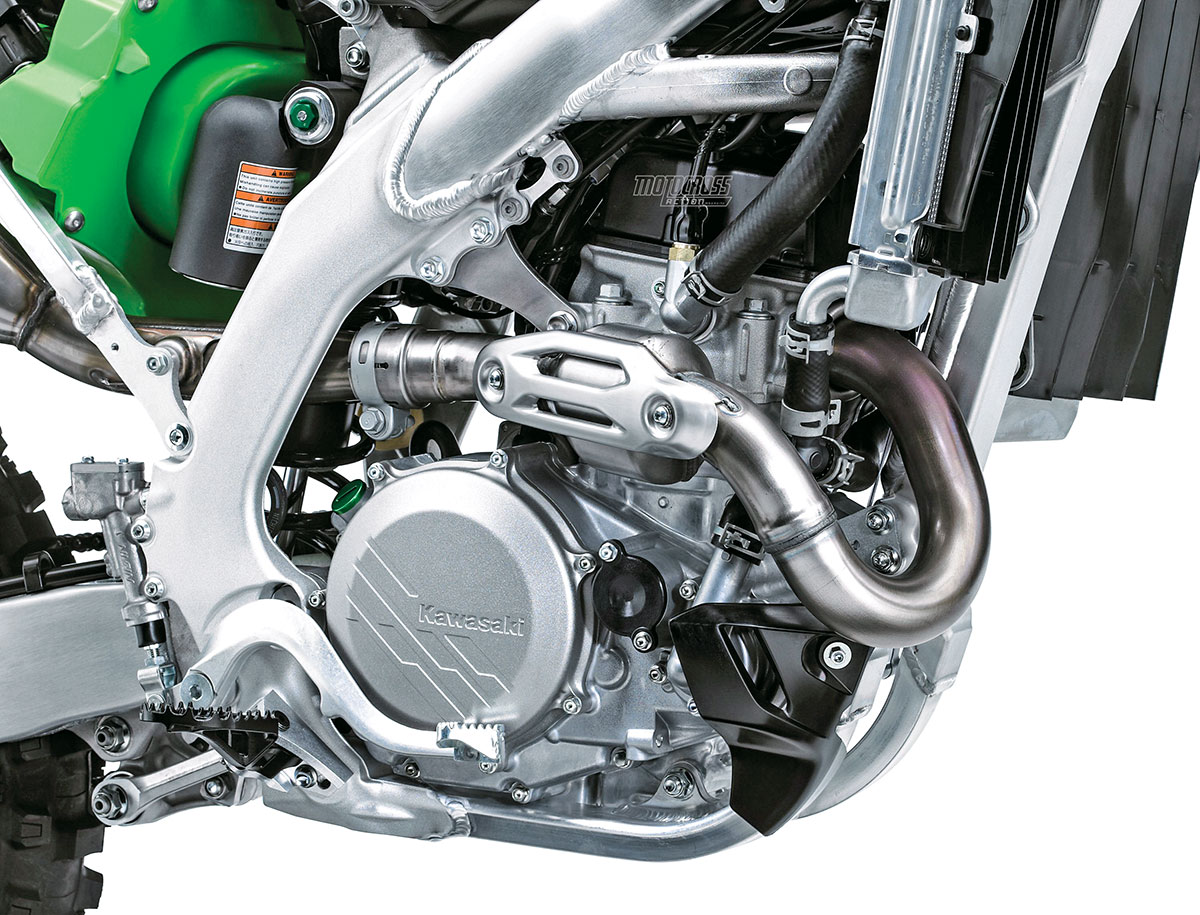 The head pipe is 105mm longer than in 2018.
The head pipe is 105mm longer than in 2018.
Q: WHAT DO THE GREEN, BLACK AND WHITE COUPLERS REALLY DO?
A: Which plug-in coupler is best? Take our word for it, the green coupler offers the best ECU map. It is significantly stronger than the black coupler and a lot less hyper-kinetic than the white coupler.
Yeah, yeah, yeah, we know that many people say the black coupler doesn’t lose any mid-to-top power and just mellows out that quick hit off the bottom. Wrong. Dead wrong. The black coupler mellows out the complete rev range—from zero to 11,500 rpm. If you compare the black map to the green map, the black map gives up 1 to 2 horsepower from 6000 rpm all the way to 11,500 rpm. As for the white coupler, it produces the exact same horsepower from bottom to top as the stock green coupler. No more and no less. The aggressive map doesn’t make more power; it just delivers that power with a crisper feel.
Q: WHAT DO WE LIKE ABOUT THE 2019 KX450 AND WHAT DO WE DISLIKE?
A: Straight up, we love the improvements that Kawasaki made to the 2019 chassis, ergos, forks, powerband, fit and finish of the KX450. The Kawasaki, more than any other 2019 motocross machine, rose to the challenge posed by KTM’s juggernaut of superlatives. Obviously, electric starting, coil-spring forks and stronger front brakes were the first things that had to be adopted, even if it meant gaining weight, but Kawasaki went even further in co-opting more KTM ideas than the other brands.
It goes without saying that we think Kawasaki has improved the 2019 KX450 enough to regain many of its loyal, or maybe not so loyal, customers; however, we would be remiss if we didn’t point out the issues the MXA wrecking crew had with the 2019 forks, clutch, rear brake, airbox, weight and mapping.
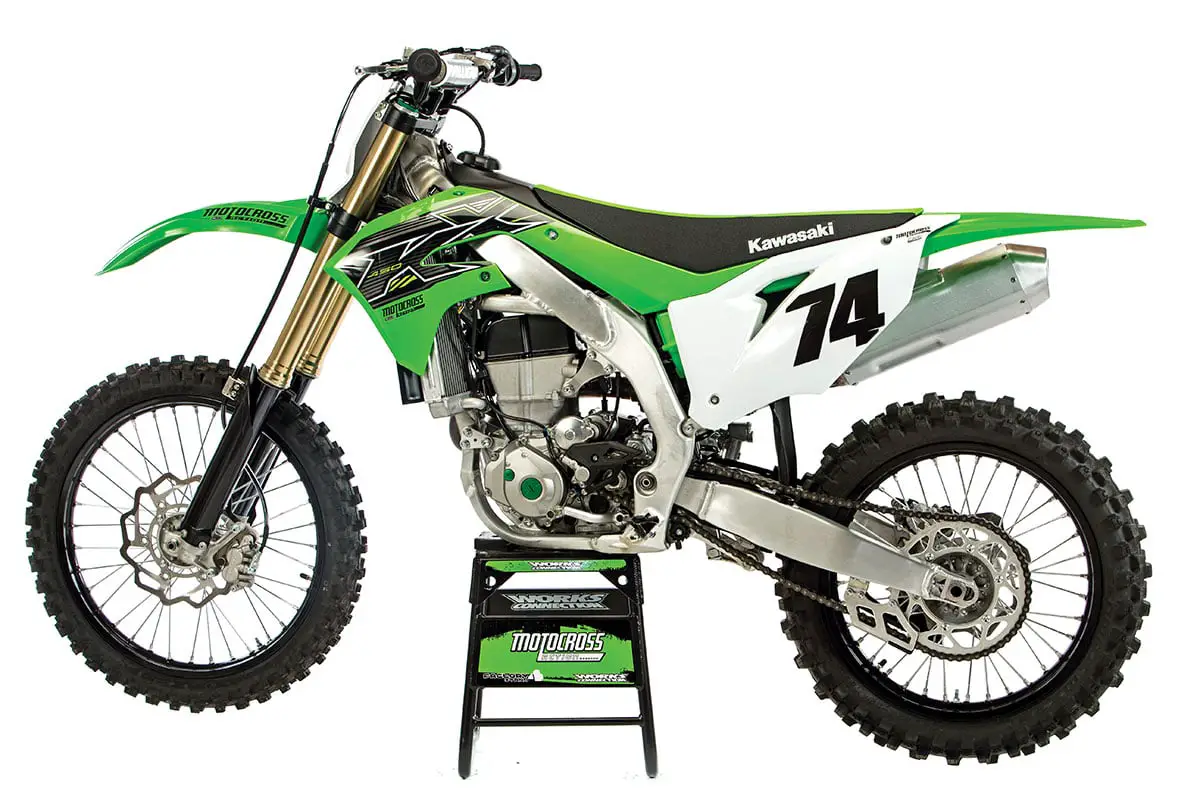
Q: WHAT’S THE BIGGEST PROBLEM WITH THE KX450 FORKS?
A: Don’t get us wrong, the Showa coil-spring forks are a massive improvement over the Showa SFF-TAC air fork from 2018; however, Kawasaki didn’t move from air forks to coil-spring forks based solely on performance. The Showa SFF-TAC forks could be made to work very well. So, why did Kawasaki dump TAC forks for coil-spring forks for 2019? Consumer resistance. The majority of the motocross world was turned off by air forks, save for the ones on KTMs and Huskys. Consumers weren’t going to buy any bike that had TAC or PSF forks on it.
The 2019 Showa coil-spring forks are touted as being A-Kit copies. We’ll accept that, because there are only so many things you can do to coil-spring forks to make them better. Eventually, the stuff they were using on A-Kit forks a decade ago would filter down to the production forks. That is how development works.
Most test riders loved the feel of the 2019 KX450 Showa forks. They were plush, comfortable and, best of all, followed the ground better than the TAC air forks. The slower the test rider, the more he liked the 2019 KX450 forks. Conversely, the faster the test rider, the less he liked the 2019 KX450 forks. Why the dichotomy? For fast Intermediates and Experts, the KX450 fork is too soft to hit anything bigger than a Snickers wrapper without bottoming. Novice and Vets loved the plushness so much that they didn’t mind the occasional clank.
Q: WHAT’S THE SIMPLEST WAY TO FIX THE KX450 FORKS?
A: The simple solution for both fast and slow riders can be found in the fork springs. Kawasaki’s stock spring rate is 5.0 N/m. Kawasaki offers optional 5.2 N/m springs. MXA’s faster or heavier test riders opted for the stiffer fork springs. For the Vet test riders, we went the baby-bear route of switching to a 5.1 N/m spring rate. Yes, we know that Kawasaki doesn’t offer a 5.1 N/m spring. No sweat! We left the stock 5.0 spring in the right fork leg and put a 5.2 optional spring in the left fork leg. Voila! By math magic, we had a 5.1 N/m spring. And for light and slow test riders, we left the stock 5.0 N/m springs in and added fork oil in both legs in small 5cc increments to lessen bottoming. Short of sending your KX450 forks out for a re-valve, this is the simplest fix.
Q: HOW CAN THERE BE ANYTHING WRONG WITH THE NEW HYDRAULIC CLUTCH?
A: KTM has a decade of real-world experience with hydraulic clutches; Kawasaki has about six months. KTM’s Brembo clutch is bulletproof. It can be abused and misused without a whimper. Sadly, it wasn’t long into testing that the KX450’s hydraulic clutch started slipping. We were shocked, not because we didn’t have experience with slipping KX450 clutches, but because we had no experience with slipping KTM hydraulic clutches.
What’s the problem? First and foremost, the KX450 needs stiffer clutch springs. This should come as no surprise. It is a common Kawasaki fix. MXA installed a set of Pro Circuit’s stiffer clutch springs. This was a big improvement and made the clutch stronger, grippier and more reliable over the long haul. And yes, the stiffer clutch springs make the lever harder to pull, but that beats buying new clutch plates all the time. If the KX450 clutch was too hard to pull with stiffer springs, we only added three stiff springs to fine tune the feel.
The second issue with the KX450 clutch came from the judder spring. MXA has never liked the judder-spring concept. It not only leads to breakage of the narrow judder plate, but it turns your eight-plate clutch into a 7-1/2-plate clutch, which, of course, lessens grip and encourages slip. We removed the judder spring’s washer, Belleville washer and skinny clutch plate, and replaced them with one normal clutch plate. This two-prong attack (stiff springs and eighth plate) gave us a more reliable clutch, less slip under drive and no need to replace clutch plates as though it were a cable-operated pack.
Worse yet, it turned out that the clutch’s master cylinder ratio didn’t totally release the clutch when you pulled it in. In fact, when the clutch lever hit your fingers, the clutch was still engaged—which meant that when you pulled it to the point of hitting your fingers, you were burning it up at the same time. We fixed this by switching to an ARC Power Lever, which offers ratios that release the clutch earlier.
Q: WHAT’S UP WITH THE KX450’S REAR BRAKE?
A: For some unknown reason, Kawasaki’s engineers decided that motocross racers wanted more powerful rear brakes. We would have been happy if they had just bled their brakes fully at the factory. We didn’t need to go to the largest-diameter rear rotor in the sport (250mm). Think of a large brake rotor the same way you think about getting a longer wrench, or even a breaker bar, to loosen a frozen axle nut. A big rotor is essentially a breaker bar. On the 2019 KX450, the rear brake is touchy. It doesn’t have much in the way of modulation. There is no brake, and then there is too much brake.
Additionally, the rear brake pedal could use more adjustment range. It is easy to run the brake pedal high but almost impossible to run it low without locking up the rear brake. The MXA test riders cut three threads off the bottom of the rear brake master cylinder’s plunger rod. This provided more clearance between the plunger rod and the top of the brake pedal.
In the long run, the KX450 brake will become less touchy as the pads wear down, but we sped up the process by grinding down the leading edge of the brake pads to reduce their first interaction with the rotor’s surface area and to lessen pad surface area on the rotor.
Q: IS THE 2019 KX450 AIRBOX A BIG IMPROVEMENT?
A: No. We accept that the “Big Four” Japanese brands have been pushed back on their heels by KTM, so we understand that they want to co-opt as many KTM features as possible without running up their R&D budgets. KTM’s airbox design is brilliant; you don’t need any tools to get into it, and with a flip of a switch the dirty air filter is out. Kawasaki went to a side-mounted airbox cover for 2019. But, side mounting is where the similarity to KTM ends. Unlike on the KTM, the KX450 airbox cover requires both an 8mm and 10mm wrench to get the airbox cover off. The KX450 air filter cage tries to mimic KTM’s plug-in design with a weird hook that slips onto the center post via a back-handed slide job. It isn’t easy to use. Worse yet, when you pull the seat bolt out to get the airbox cover off, the threaded plate that was supposed to be embedded in the rear fender’s plastic falls out and lands on the ground.
Q: WHAT DOES THE 2019 KX450 WEIGH?
A: The good news is that it is still the lightest Japanese-made 450. The bad news is that it used to be 9 pounds heavier than a KTM 450SXF; now it is 10 pounds heavier. At 233 pounds, the KX450 gained 2 pounds between 2018 and 2019. That is actually a phenomenal achievement for a bike that added electric starting, coil-spring forks and a hydraulic clutch. For comparison, the Honda gained 7 pounds when electric starting was added to the 2018 CRF450. Conversely, the KTM gained an additional pound for 2019, bringing its weight up to 223 pounds (with an empty gas tank).
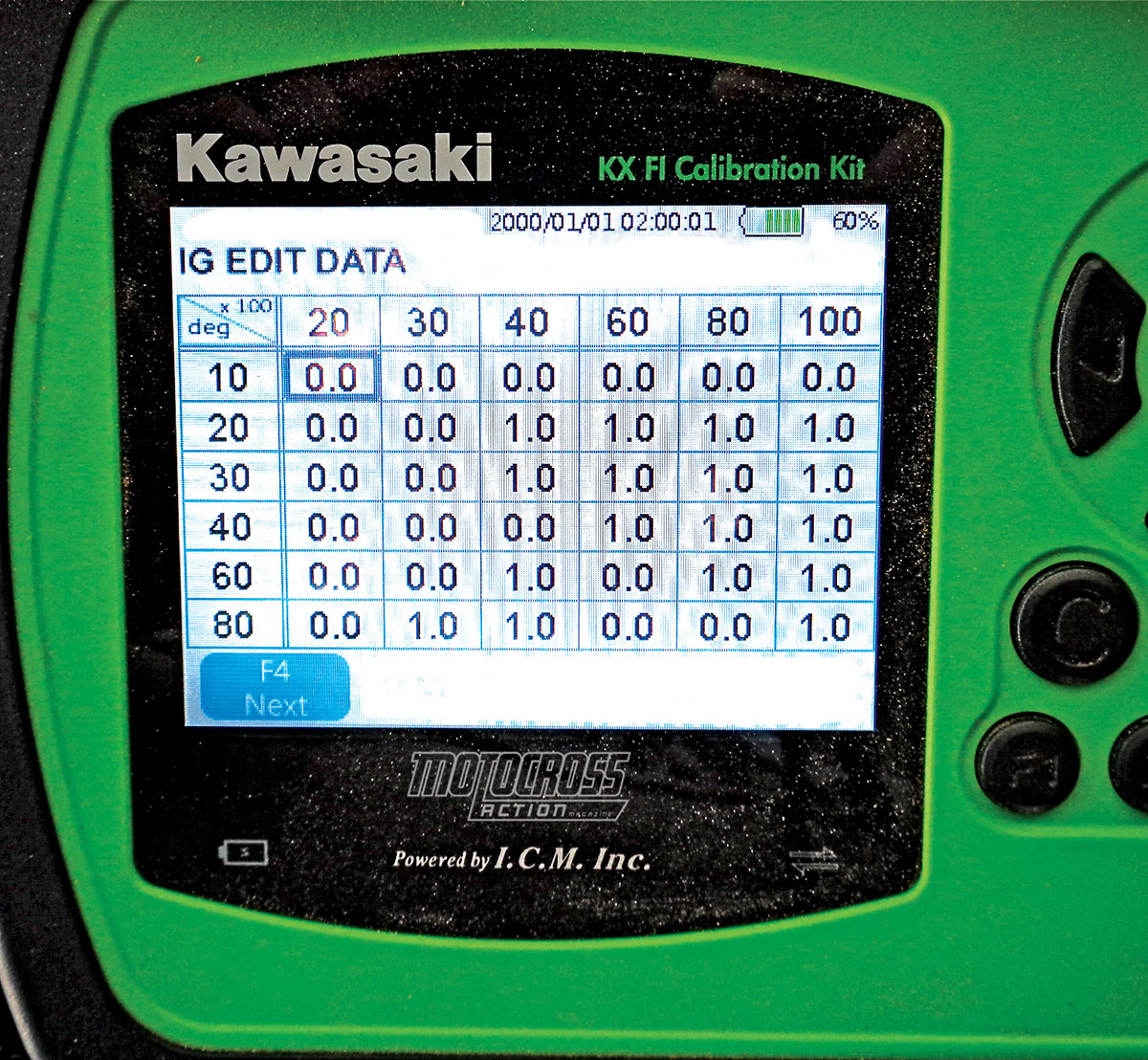 MXA’s recommended 2019 Kawasaki ignition map.
MXA’s recommended 2019 Kawasaki ignition map.
Q: WHAT NEEDS TO BE DONE TO THE MAPPING?
A: Do you know your Kawasaki maps? Back in 2016, the Kawasaki KX450F popped and banged like New Year’s Eve in Tijuana. It sounded like a shotgun going off every time the throttle was rolled off. For 2017, Kawasaki remapped it to reduce decel pop and give the engine a better low-to-mid transition. What about the 2019 map? It could be better. We have included the fuel and ignition maps (above) that we ran on our KX450 to liven up the powerband across the spread.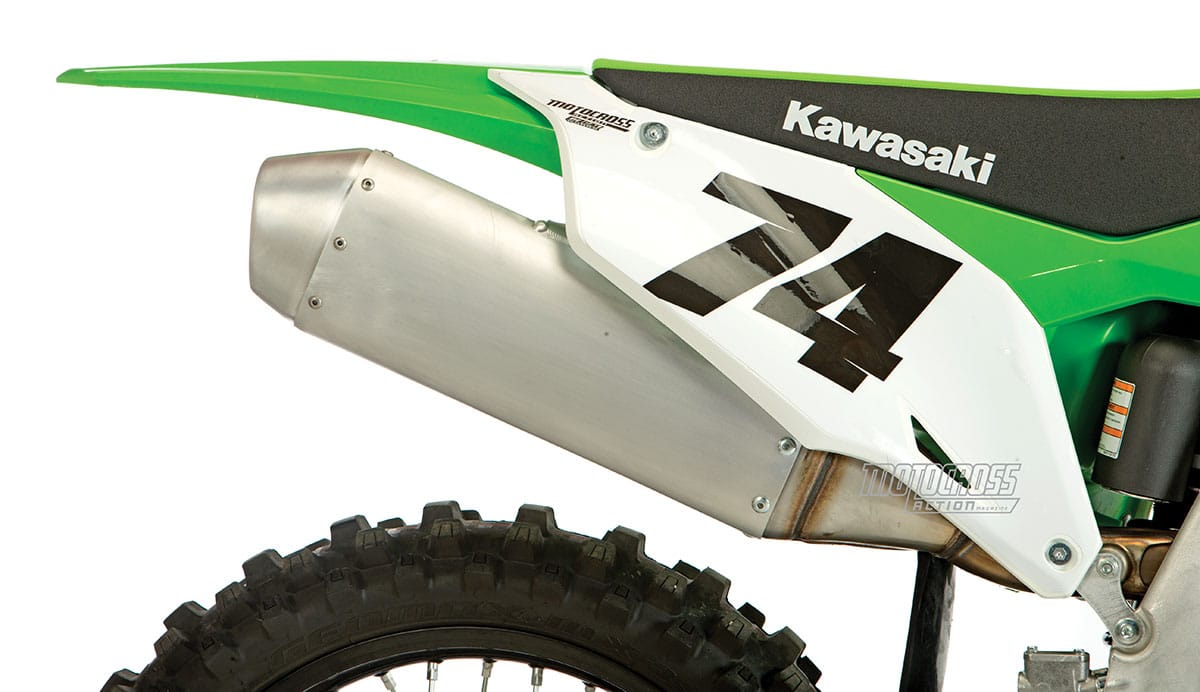 This is the first KX450 muffler in years that is quiet enough to pass the two-meter-max sound test.
This is the first KX450 muffler in years that is quiet enough to pass the two-meter-max sound test.
Q: TO WHAT EXTENT IS KAWASAKI FOLLOWING IN KTM’S FOOTSTEPS?
A: In any business, you have to stay on top of market trends. This is a necessity made all the more imperative if your prime competition is setting those trends. Here is a quick list of Kawasaki’s attempts to keep up with the Joneses of Mattighofen.
(1) Electric starting. KTM has been using electric start on its race bikes since 2007. The 2019 KX450 is Kawasaki’s first-ever electric-start motocross bike.
(2) Finger-followers. The KTM was the first motocross bike to come with finger-followers (small levers that activate the valves instead of rocker arms or buckets) over 10 years ago. Honda followed suit in 2017, and the Kawasaki KX450 joined the party in 2019.
(3) Hydraulic clutch. KTM has been using hydraulic clutches on its motocross bike since 1998—that is 21 years. The 2019 Kawasaki KX450 has the first-ever hydraulic clutch on a Japanese-built motocross bike.
(4) Embossed sag scale. Back in 2016, KTM embossed a line in the left side of the rear fender to indicate where to measure race sag from. For 2019, Kawasaki copied that idea with a very faint embossing of its own sag line.
(5) Plain bearings. KTM was the first to switch from needle bearings to plain bearings. Plain bearings are essentially bushings coated with an anti-friction material. They offer more surface area per contact patch, longer fatigue life, no brinneling and no moving parts—perfect for connecting-rod use. For 2019, the KX450’s big end-rod bearing is now a plain bearing.
(6) Shock preload ring. For a decade, the MXA wrecking crew has complained about KTM’s nylon preload ring. Guess what? Last year Suzuki copied it, and this year Kawasaki copied it. To adjust the preload, especially once the shock spring stops spinning easily, we use a long screwdriver to pry on the preload ring while using the frame as the fulcrum.
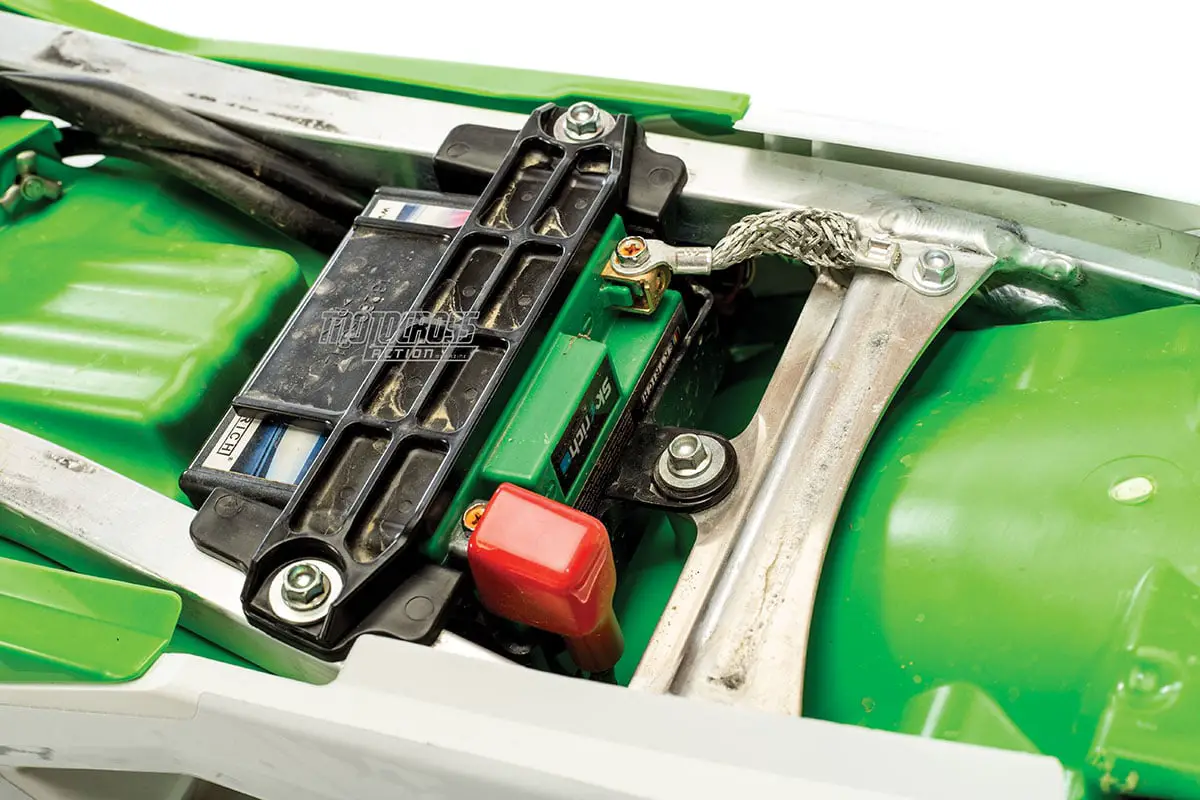
Q: WHAT DID WE HATE?
A: The hate list:
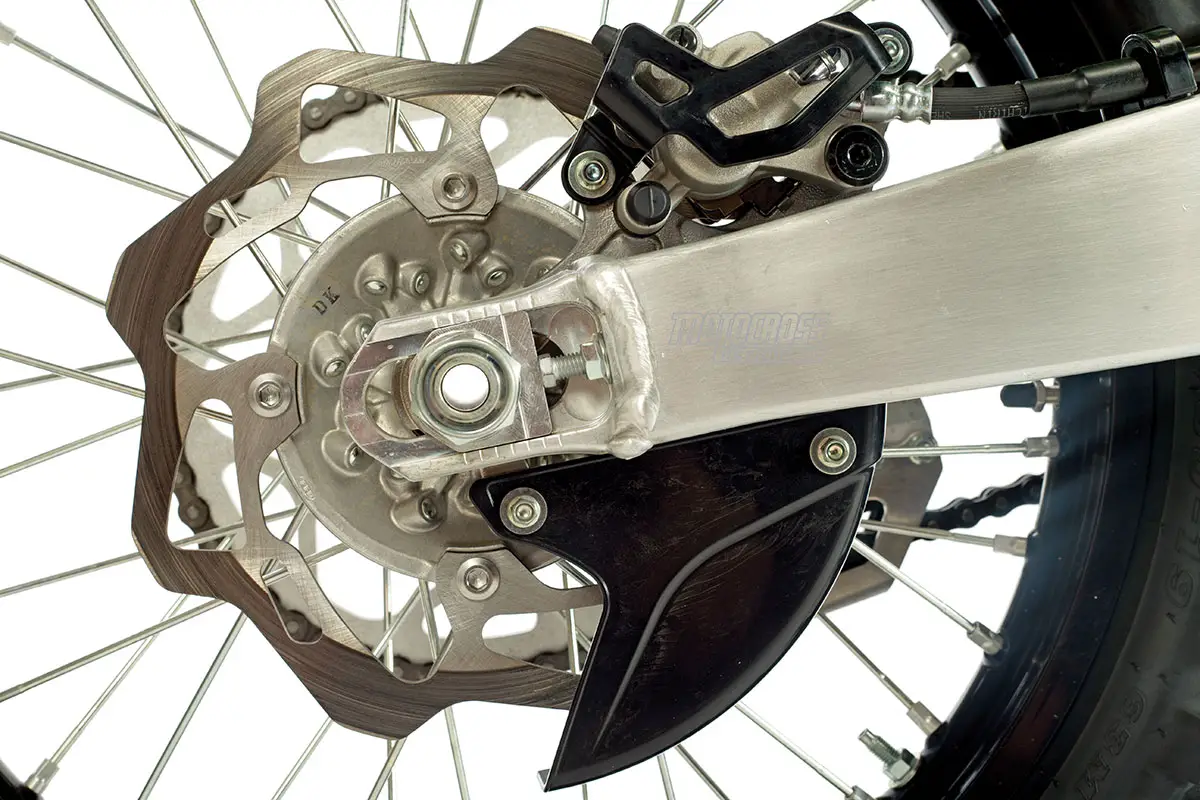
(1) Rear brake pedal. For our tastes, the rear brake pedal could use more adjustment range. It is easy to run the brake pedal high but almost impossible to run it low. Kawasaki has a very finicky rear pedal adjustments. If you get it wrong, the rear brake will overheat, squeal and lock up. Worse yet, Kawasaki decided that the 2019 KX450 needed a more powerful rear brake. This is seriously flawed logic, because most rear brakes are already too easy to lock up. What they needed was a more progressive feel, not more clamping pressure. Kawasaki’s all-new, jumbo-sized, 250mm rear rotor is the same size as many front rotors were a few years ago (and 30mm larger than the 2019 KTM 450SXF’s 220mm rear rotor). The result is a disaster.
(2) Airbox. So close to good yet so far.
These are the parts that make up the KX450’s judder spring clutch system. We throw these three pieces away.
(3) Clutch. With the Kawasaki becoming the first Japanese-built motocross bike to update to hydraulics, we thought our KX450 clutch issues would be behind us. Not so. Our KX450F clutch squealed and faded, not because of the hydraulics — in spite of them. Our fix? First, get rid of the judder spring. Second, buy stiffer clutch springs and do hand exercises. KTM’s hydraulic clutch still sets the standard for durability—not Kawasakis. Additonally, the KX450’s clutch banjo bolt looks like it came off a John Deere tractor. It is clunky and oversized. The ultimate option is to buy a Rekluse or Hinson clutch (for a grand).
(4) Weight. The 2019 Kawasaki KX450 is the lightest Japanese-made motocross bike on the showroom floors. It’s easy to look good next to the 238-pound CRF, 238-pound YZ-F and 241-pound RM-Z. The 2019 Husqvarna FC450 weighs 224 pounds and the KTM 450SXF weighs 223 pounds. Kawasaki has some work to do.
(5) Aesthetics. Why does the 2019 Kawasaki look so much like all previous KX450s? Kawasaki had to make all-new injection molds for the 2019 plastic, so it wouldn’t have cost them much more to update the look to highlight the changes.
(6) Bars & grips. Many of the old-school MXA test riders prefer 7/8-inch handlebars over 1-1/8-inch oversize bars. Kawasaki is the last hold-out on going big, but with the clutch perch, kill button, launch-control button, electric starter button, brake perch, throttle assembly and crossbar clamps, they actually had to shortened their grips by a half inch.
(7) Levers. For some unknown reason, the clutch and brake levers are completely different (as though they came off different bikes). Most test riders liked the wider profile of the clutch lever and disliked the narrower and shorter profile of the front brake lever. You should change the clutch lever to an ARC Power Lever.
(8) Battery. The battery has a micro-switch that turns the battery off if it gets hot—this is reportedly what happened to Eli Tomac’s KX450 at the Motocross des Nations. It will refuse to turn the engine over until it cools down.
(9) Bottom chain roller. The chain roller under the front of the swingarm disintegrates quickly. We found ourselves changing them every couple hours, but finally got smart and retrofit the dual-bearing roller from the KX250.
(10) Fork springs. Too soft but great if this were an enduro bike.
(11) Airbox. It’s weird, small and tight, and it takes two different wrenches to get the cover off.
(12) Seat bolt. When you remove the seat bolts, the threaded plate falls out of the rear fender.
(13) Radiator cap. We swap the 1.1 radiator cap for a 1.8 or 2.0 to keep it from overheating.
Q: WHAT DID WE LIKE?
A: The like list:
(1) Power. This is an incredibly lively powerband. It snaps to attention with the tiniest twist of the wrist.
(2) Handling. Once you stop the forks from blowing through deep into the mid-stroke, the KX450 is a sweet-turning machine. Actually, when the forks blow through the mid-stroke, it turns even sharper—just not as sweet.
(3) Footpegs. The KX450 footpegs can be moved down 5mm if you so desire. On the new chassis, the lower position felt better.
(4) Tires. The stock rubber is now the ubiquitous Dunlop MX3S combo. It was a Bridgestone 403/404 pairing in 2018.
(5) Sound. In the past, Kawasaki used a trick to pass the AMA Amateur sound test. Kawasaki used a half perf-core and half straight-core muffler pipe. It deadened the sound at 20 inches for the Amateur test but made it an ear-shattering 122 decibels on the 2-meter-max test. For 2019, the KX450 muffler can pass both tests with ease. The downside is that the muffler itself is massive.
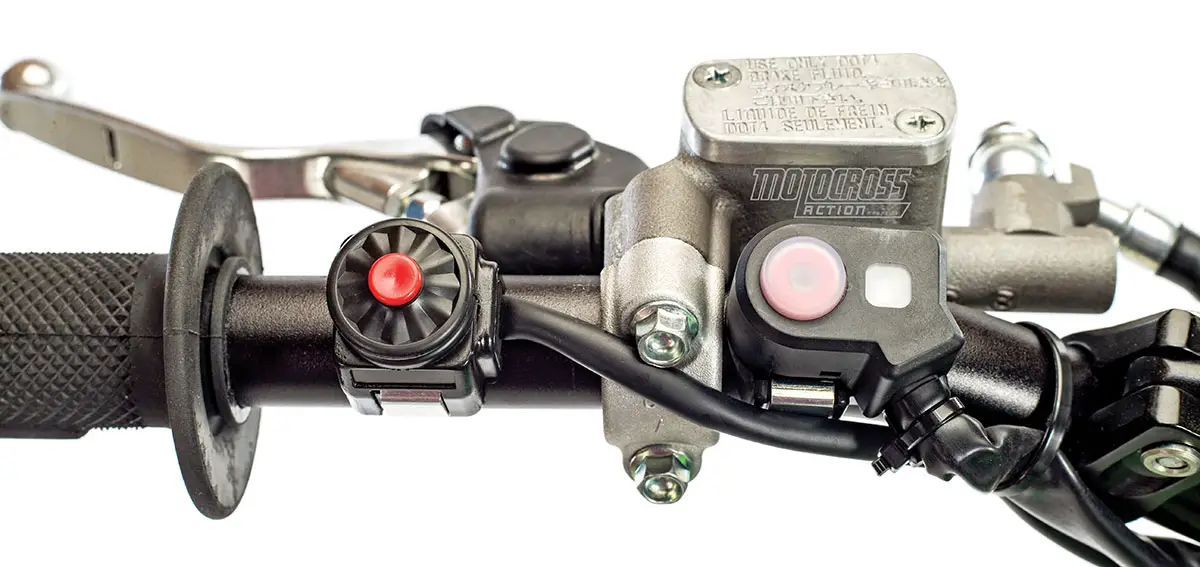
Q: WHAT DO WE REALLY THINK?
A: If you crossed the Kawasaki off your short list of bikes to buy a few years ago, you can put it back on. The 2019 Kawasaki KX450 is a “first-year model” that might need a little more aging before it can take center stage, but it has good bones to build on. Every MXA test riders likes the 2019 KX450, but it’s not completely ready for prime time as it rolls off the assembly line. Maybe next year.
MXA’S 2019 KAWASAKI KX450 SETUP SPECS
This is how we set up our 2019 Kawasaki KX450 for racing. We offer it as a guide to help you find your own sweet spot.
SHOWA COIL-SPRING FORK SETTINGS
Here is all you need to know about living happily every after with the 2019 Kawasaki KX450’s Showa coil-spring air forks. We have included spring rates for Vets, Intermediates and Pros. They are massively different, and we don’t think that everyone can live happily ever after with the stock spring rate. It should be noted that we made our 5.1 N/m spring rate by running a 5.2 N/m spring in one leg and a 5.0 N/m spring in the other leg. Don’t let your pride get in the way—run these numbers according to your true skill level. These are the numbers we ran on the 2019 Kawasaki KX450 for hardcore racing:
Spring rate: 5.1 N/m (5.0 N/m for light riders, 5.1 N/m for Vet riders, 5.2 N/m for fast riders)
Compression: 14 clicks out
Rebound: 12 clicks out
Fork-leg height: 2mm up (0mm)
Notes: If you have to race with the stock fork spring while waiting to get your forks fixed, slide the forks down in the clamps until the top of the triple clamp is even with the bottom of the fork cap. Otherwise, run the forks 2mm up in the clamps.
SHOWA SHOCK SETTINGS
The shock worked well from day one, helped by the new linkage and 105mm of sag. We recommend this shock setup on the 2019 Kawasaki KX450 (stock specs are in parentheses):
Spring rate: 54 N/m
Hi-compression: 1-1/4 turns out
Lo-compression: 18 clicks out
Rebound: 12 clicks out
Race sag: 105mm
Notes: The shock was easy as pie to set up. The rear end had minimal wallowing and worked very well under braking in chop and square-edged bumps. Light riders under 150 pounds might want to switch to the optional 52 N/m shock spring.


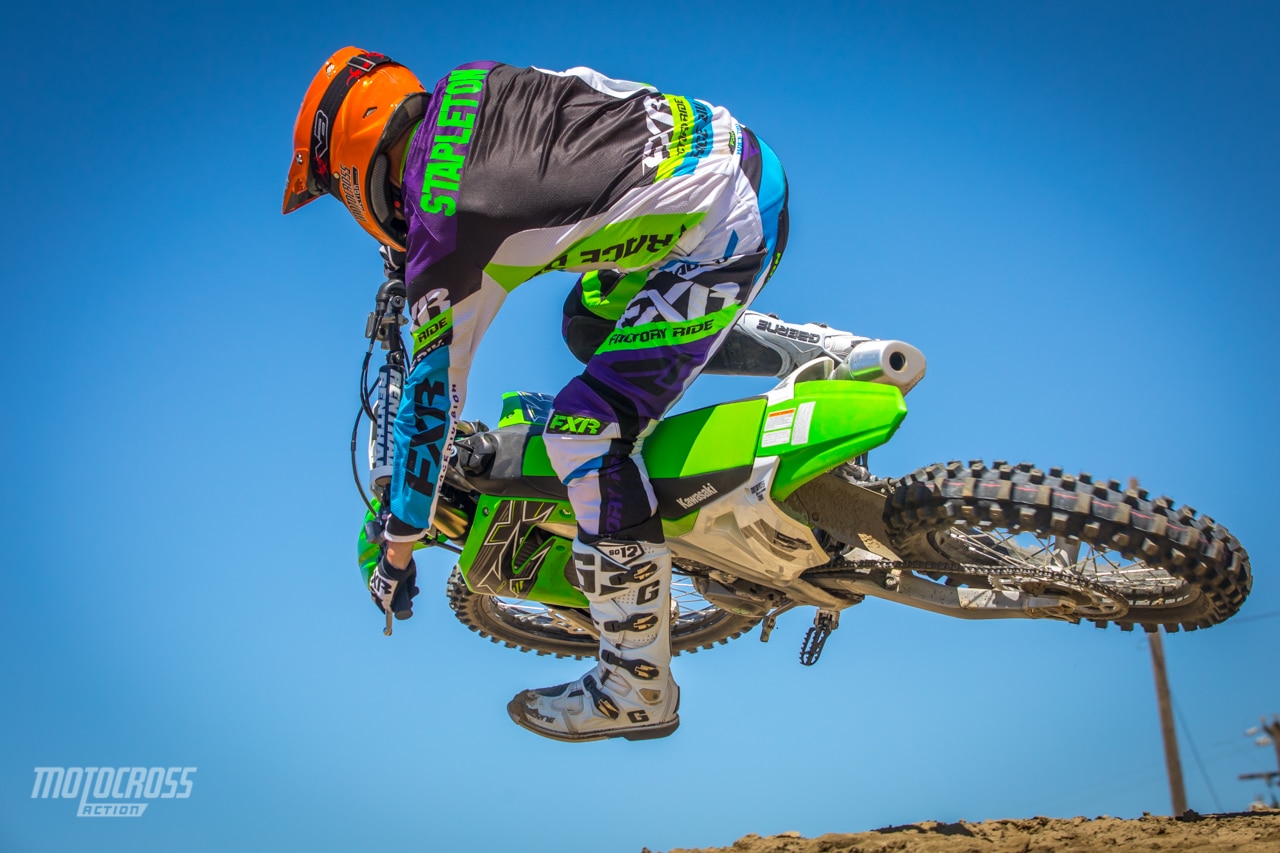
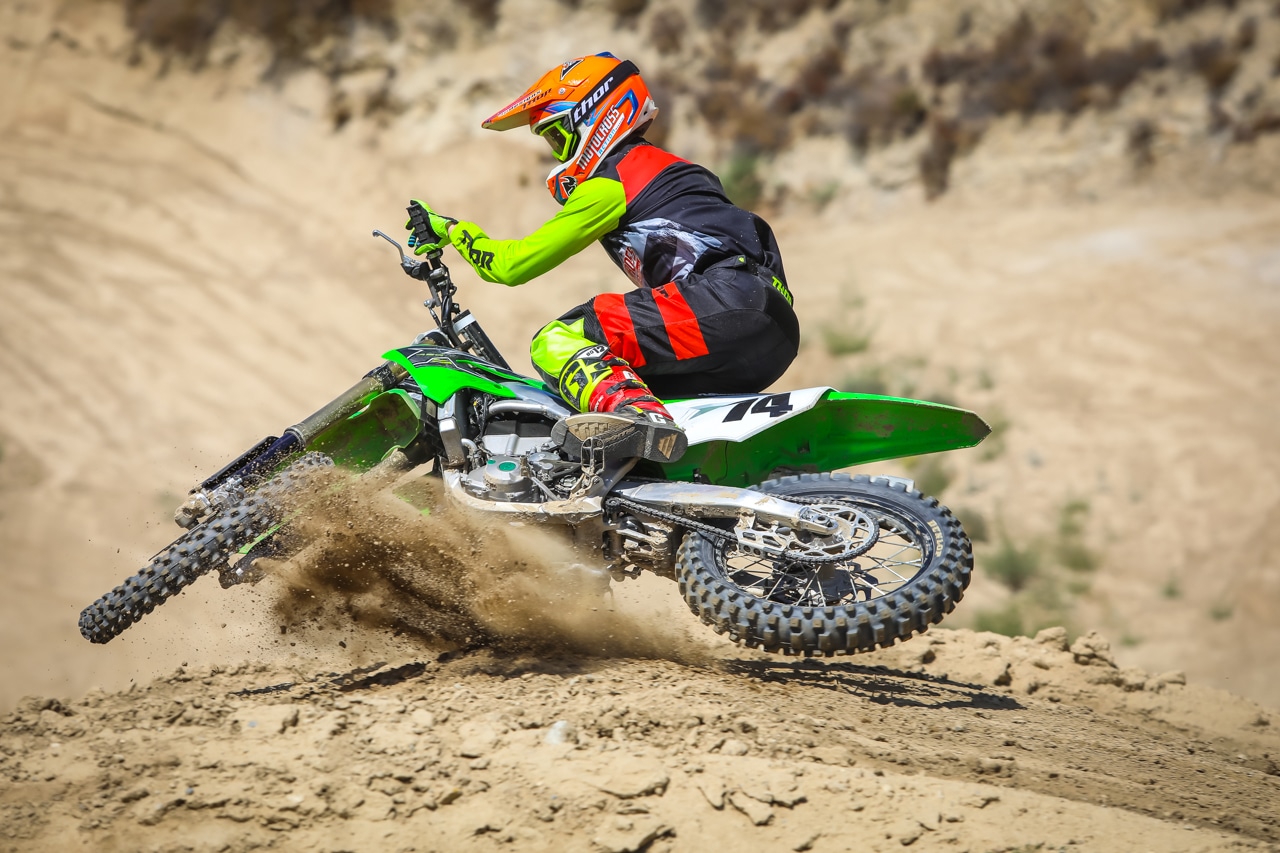
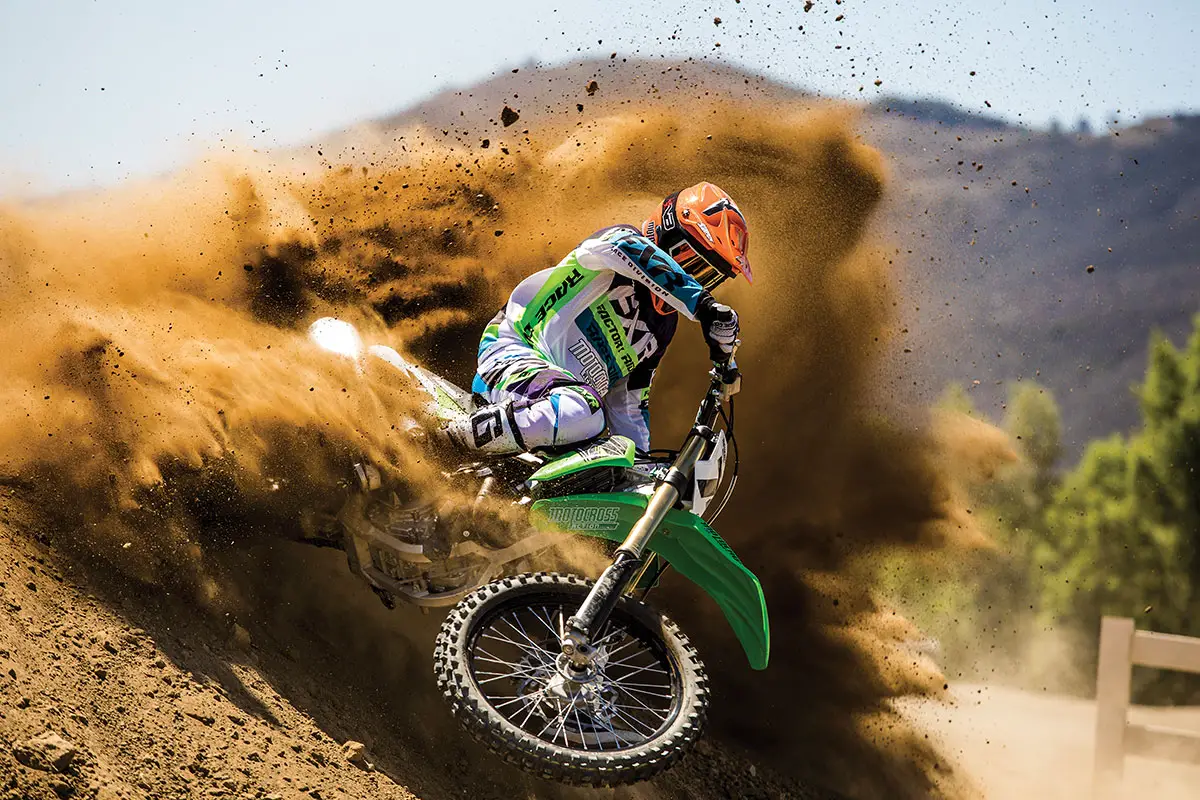
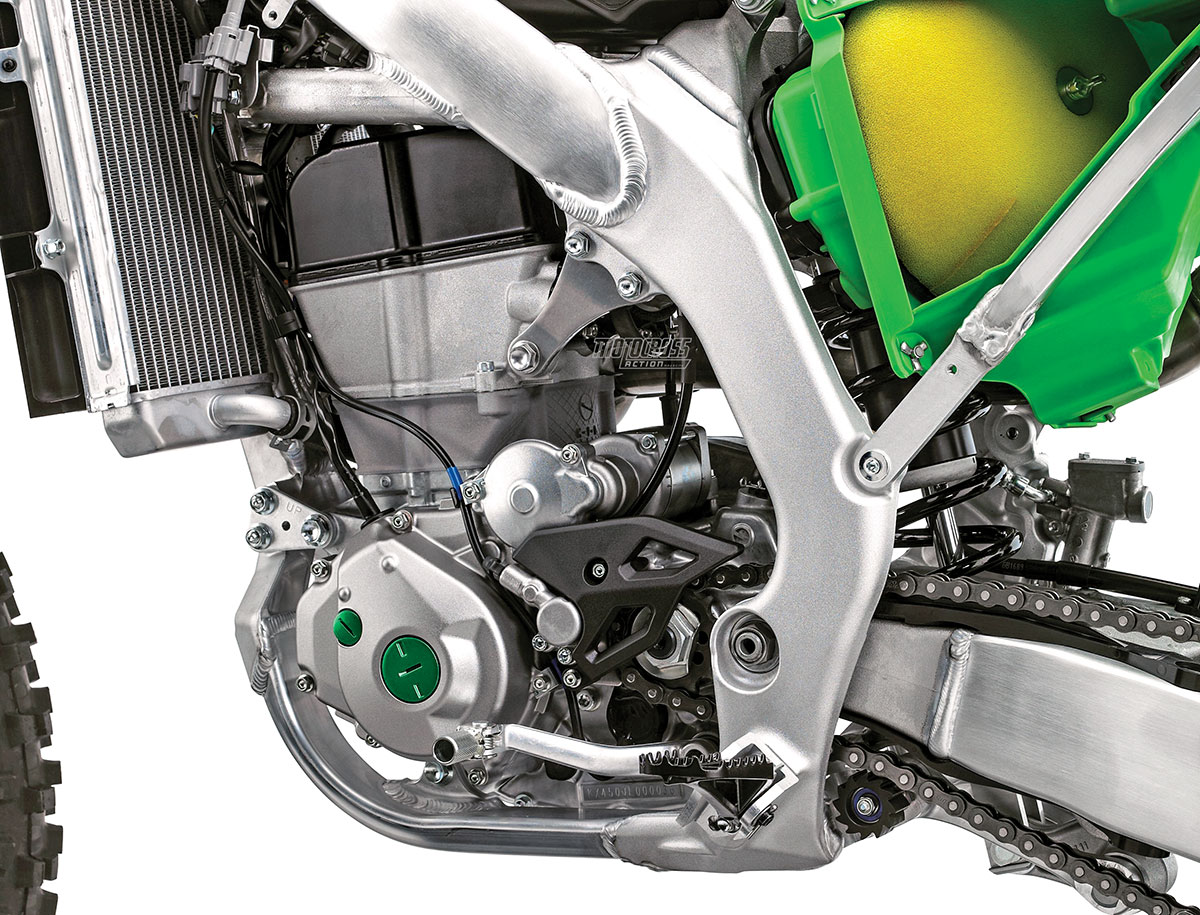

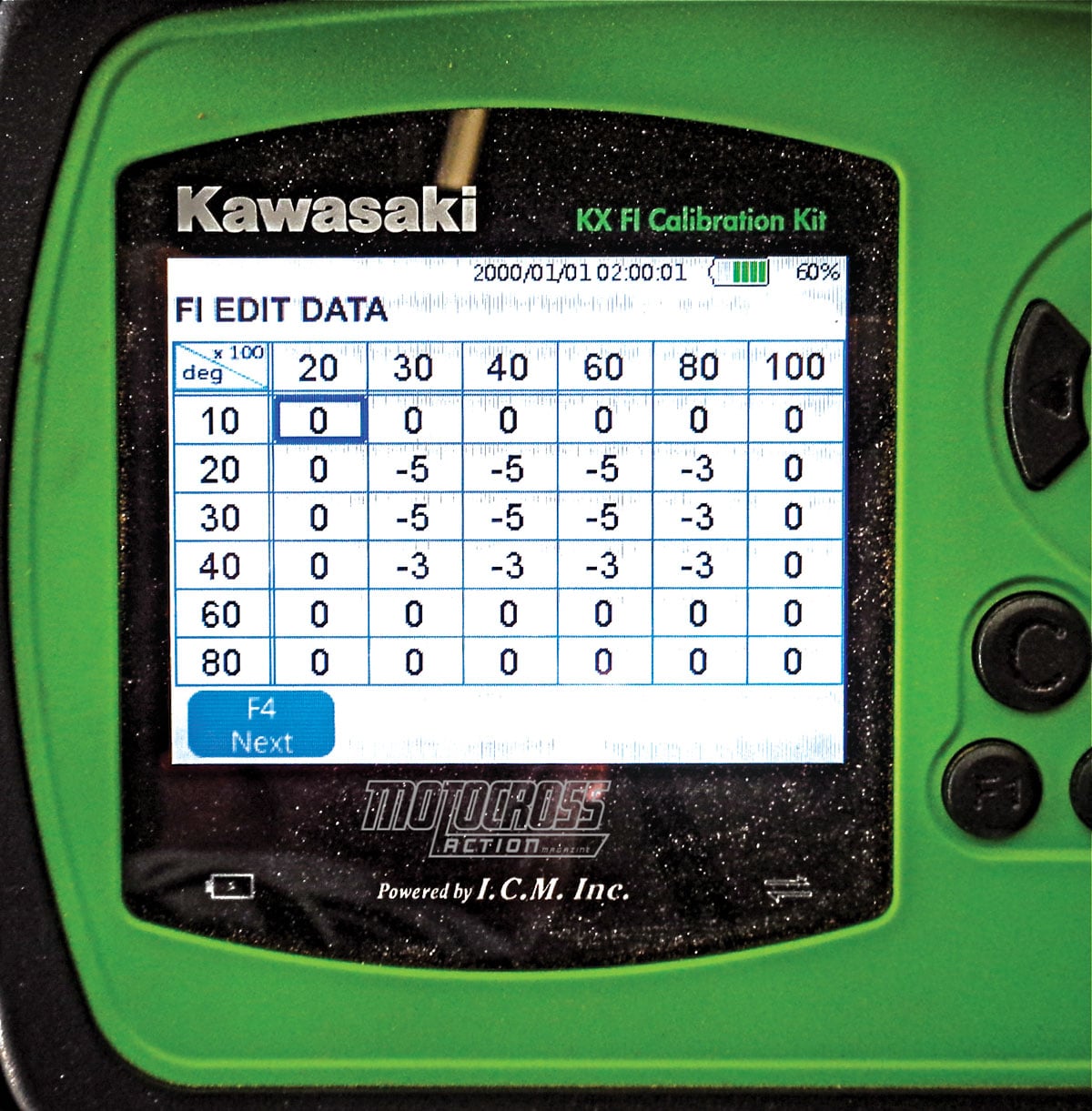
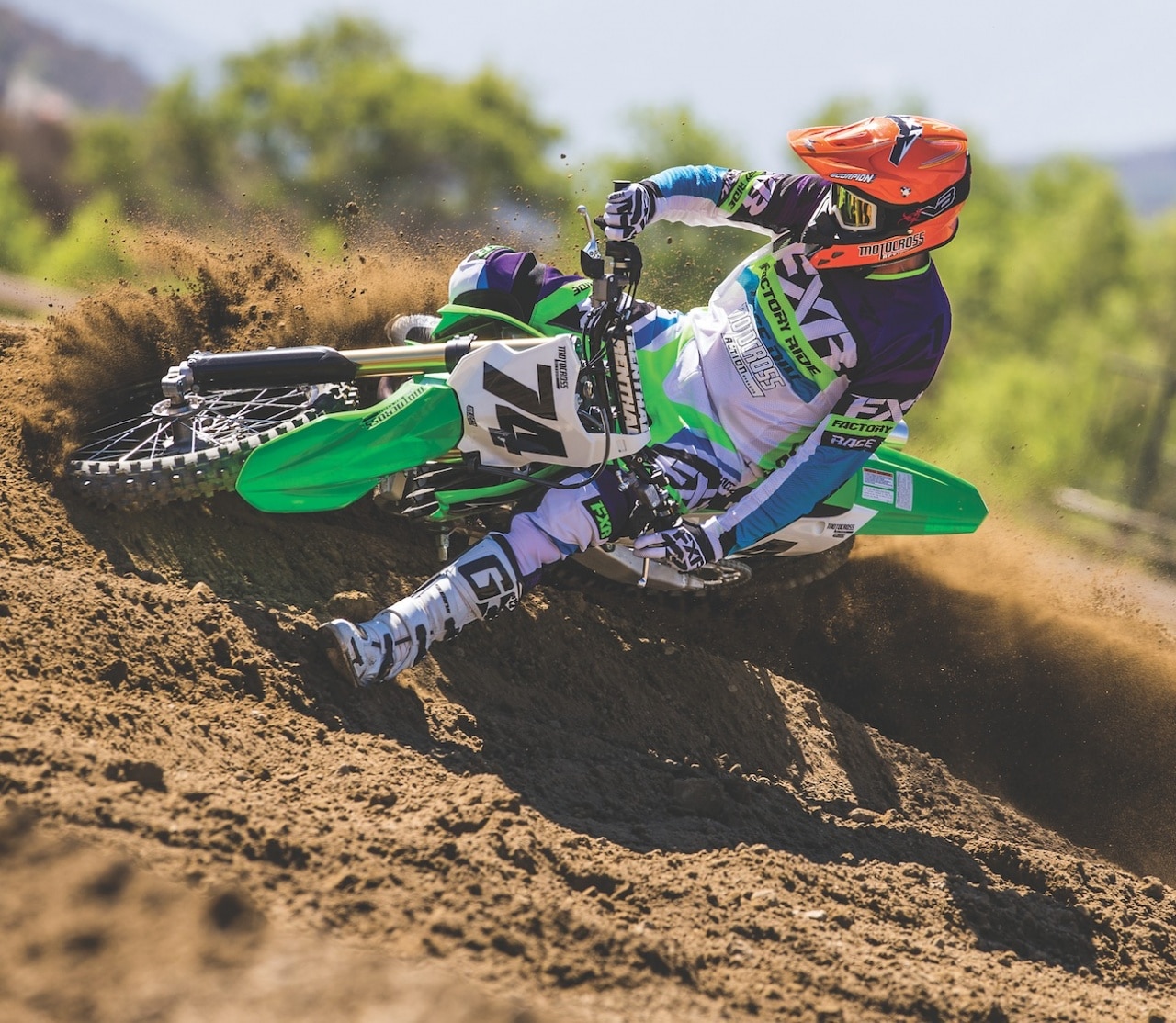
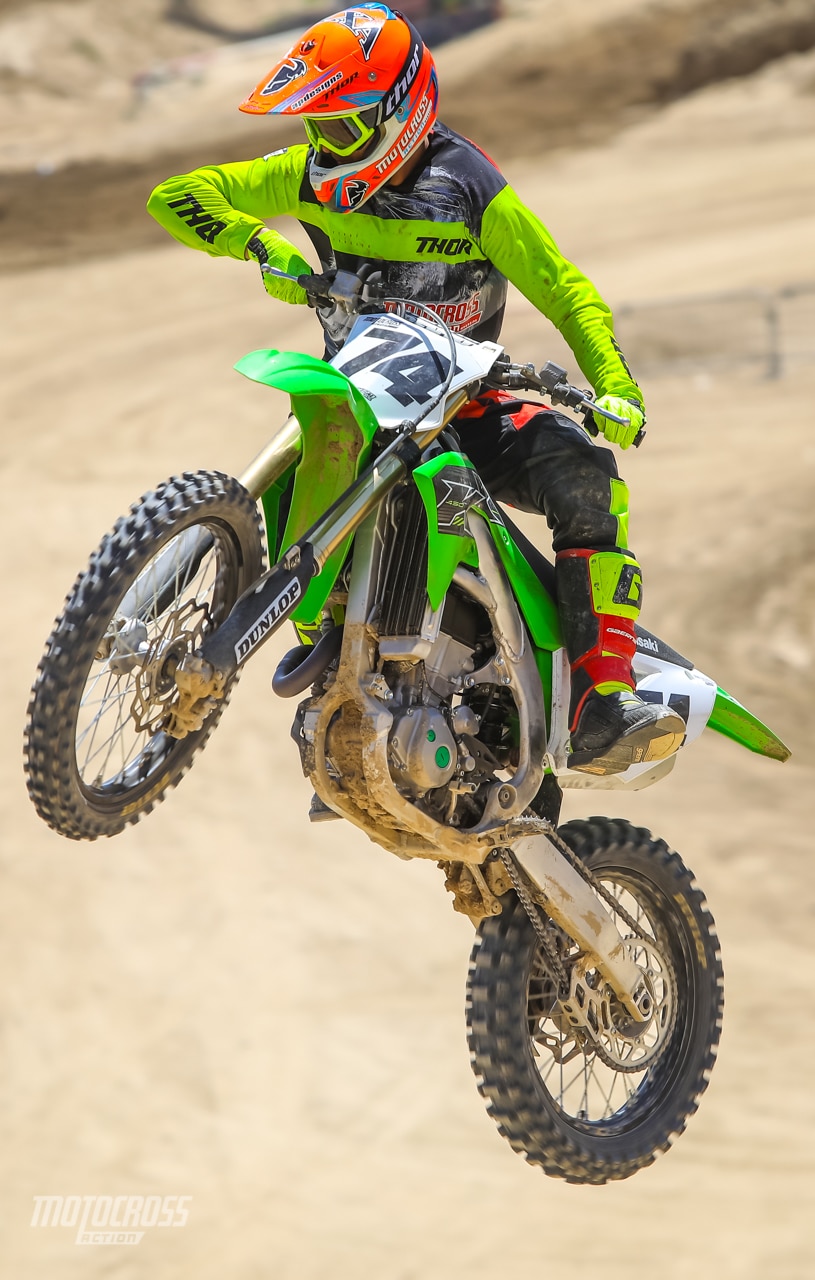



Comments are closed.